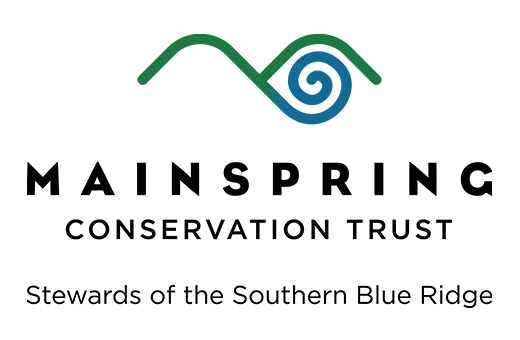LTLT Adds to Tessentee Bottomland Preserve
A bargain sale by Margaret Parks, in honor of her late husband, James (Jim) Parks, Jr., will allow the Land Trust for the Little Tennessee (LTLT) to add another 5.6 acres to its Tessentee Bottomland Preserve. Parks sold the property to LTLT for less than one-half of its market value and financed one-half of the purchase price to allow LTLT time to raise funds for the project. LTLT acquired the original 64-acre tract of bottomland and river bluff at the junction of Tessentee Creek and the Little Tennessee River in 1999 and 2000. The ecologically diverse Tessentee Preserve encompasses habitat types which one would more likely find in the Mississippi Valley than in the mountains of Western North Carolina, including wetland, red cedar savannah, canebrakes, and yellow pine/blackjack oak forest. The Parks property will add yet another unique habitat to Tessentee Preserve.
The Parks addition includes a large granite outcropping overlooking Tessentee Creek which contains a distinctive habitat with a profusion of plant life. It also commands a sweeping view of the broad Little Tennessee valley looking south towards Rabun Gap, Georgia. The outcropping is said to have served as a “lookout” for the Cherokee and could have provided the vantage point on June 27, 1760 as the British and Colonial forces marched on the Middle Cherokee towns in the first battle of the “Cherokee Wars”. That battle, which may have taken place on the bottomlands of the Tessentee Preserve, saw sixteen “Redcoats” and thirteen “Provincials” slain and seventy-six wounded in an ambush by the Cherokee.
After the Parks bought the property, which lies on the eastern boundary of The Tessentee Bottomland Preserve, Jim took a special interest in the land and spent many happy hours working and enjoying the woods. “Jim removed the dead pines after the pine beetle infestation and replaced them with oaks, redbud, hemlock, and other native species,” Margaret said. They both enjoyed the many “treasures” of the woods, including the wildflowers, blueberries and wildlife. “I once came upon a baby deer in the clearing, just lying there sleeping,” she recalled. “There were many animals making their home there, including an albino skunk.” The plentiful flora and fauna enjoyed by the Parks is due to an abundance of water resources and the diverse habitats created by the different soil types in the area. The original Tessentee Bottomland Preserve contains nine soil types making it an extraordinary place for viewing wildlife. The Preserve’s bird list stands at 115 species and butterfly list at 42 species – and counting. Tessentee Bottomland Preserve is open to the public and is stop #53 on the NC Birding Trail.
LTLT’s Executive Director, Paul Carlson, says that “LTLT is excited to expand Tessentee Bottomland Preserve to provide an even more enriching experience for the public and is honored to partner with Mrs. Parks to fulfill her late husband’s dream of conserving the land”. “Jim kept every LTLT brochure and newsletter from the beginning of its history”, Margaret Parks said. “Conserving the property with LTLT is a way of fulfilling his longtime interest”.

